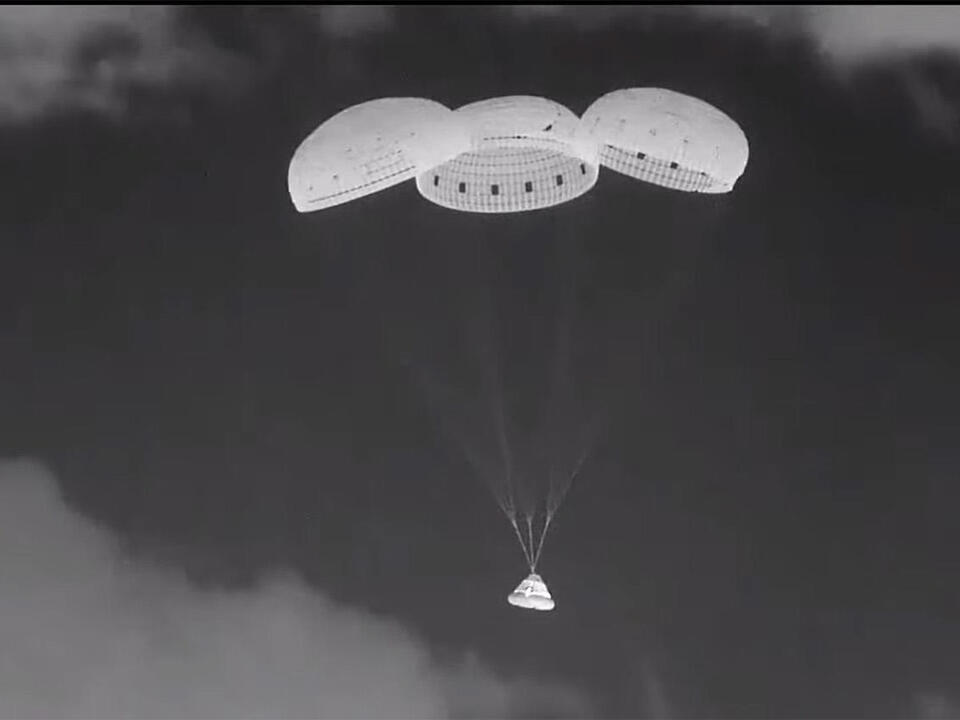Physical Address
304 North Cardinal St.
Dorchester Center, MA 02124
Physical Address
304 North Cardinal St.
Dorchester Center, MA 02124

Boeing’s Starliner spacecraft has successfully returned to Earth without its crew, concluding a test flight that faced numerous challenges. The spacecraft undocked from the International Space Station (ISS) on Friday and achieved a pinpoint landing in New Mexico, putting an end to a disappointing series of events regarding its crewed mission preparation.
Initially, NASA expressed concerns over the Starliner’s thruster issues and helium leaks within its propulsion system. Despite these setbacks, the spacecraft executed a flawless undocking at 6:04 p.m. EDT, and performed a critical deorbit burn at 11:17 p.m., critical for its descent.
Entering the atmosphere at around 400,000 feet above the Pacific Ocean, the Starliner navigated through Baja Peninsula and northern Mexico, executing a successful parachute landing at White Sands Space Harbor at precisely 12:01 a.m. EDT on Saturday.
NASA and Boeing’s recovery teams swiftly began post-landing inspections to ensure the vehicle’s safety. However, the decision was made to leave behind two astronauts, Barry “Butch” Wilmore and Sunita Williams, to remain on the ISS due to uncertainties about the spacecraft’s reliability for crewed return.
Ultimately, the Starliner functioned well during the return journey. The helium leaks did not worsen, and the thrusters operated correctly, providing a stable trajectory during the deorbit process.
However, the way forward presents further hurdles. Since the service module had been jettisoned in the mission, engineers cannot inspect it for potential issues that may have contributed to earlier thruster failures and gas leaks.
This leaves Boeing and NASA with extensive data analysis, further testing, and potential redesigns, likely delaying the next flight until at least late next year.
NASA officials acknowledged that the uncrewed return provided valuable insights into the Starliner’s operations under extreme conditions, despite the challenges. Ken Bowersox, NASA’s space operations director, highlighted the achievement as a step towards certifying the spacecraft for future crewed missions to the ISS.
The successful landing was met with relief by Boeing’s team, who maintained that the Starliner could have safely conducted a crewed return. Steve Stich, managing NASA’s commercial crew program, concurred, stating a crewed landing would have been safe and successful.
Boeing’s situation, however, reflects a string of setbacks that have plagued the Starliner project, which experienced a four-year delay for its initial crewed flight due to various issues that have cost the company over $1.5 billion beyond its fixed-price contract with NASA.
The Starliner’s issues contribute to Boeing’s ongoing challenges in restoring public confidence, following the 737 Max 8 crashes and other incidents earlier this year involving their aircraft.
Going forward, it remains uncertain what additional testing will be required to rectify the problems experienced during this latest flight, as well as when the Starliner will be ready for operational astronaut missions.
Mark Nappi, Boeing’s Starliner program manager, praised the team for their hard work, emphasizing the importance of reviewing data to determine the future direction of the program.
The Starliner’s hatch was closed on Thursday, and as the astronauts prepared for the uncrewed return, Williams described the situation as “bittersweet,” expressing gratitude towards the support teams for ensuring a safe landing.
Thrusting operations commenced to propel the spacecraft away from the ISS prior to its departure. Unlike previous missions, NASA had opted for a shorter departure timeline due to thruster concerns.
After exiting its initial safety zones, the Starliner succeeded in performing critical burns necessary for a precise landing trajectory. At the peak of its return, it experienced extreme temperatures but continued to track accurately towards its landing site.
As it descended, the spacecraft deployed parachutes and airbags to ensure a soft landing at a safe speed, marking a critical moment after its complex mission.
Despite the known challenges regarding the mechanical systems, the Starliner had sufficient helium to enable a successful deorbit. This data will be imperative for NASA and Boeing as they work towards future missions.
Boeing acknowledged possible technical issues and indicated that any required modifications would be examined to enhance safety for future crewed flights.
The decision to leave the astronauts aboard the ISS rather than risk their return just underlines the complexities and risks associated with current spaceflight endeavors. As they await their eventual return, Wilmore and Williams are now slated to continue their work aboard the ISS for several more months.
Ultimately, as the Starliner continues its journey towards operational flights, the insights gained from this uncrewed return will contribute to understanding the nuances of its systems, reinforcing the importance of safety in space exploration. The story mirrors broader trends in the aerospace industry and its efforts to regain confidence amidst challenges.
In the coming months, both astronauts will have the chance to join new crew members on a scheduled SpaceX Crew Dragon flight, extending their stay and allowing further collaboration on ongoing ISS projects.
As both Wilmore and Williams transition to working alongside this new crew, they will accumulate even more experience crucial to NASA’s long-duration missions in low Earth orbit.
Only time will tell how Boeing will navigate through the complexities ahead, but perseverance is vital for successful outcomes in future missions.
Source: CBS News



